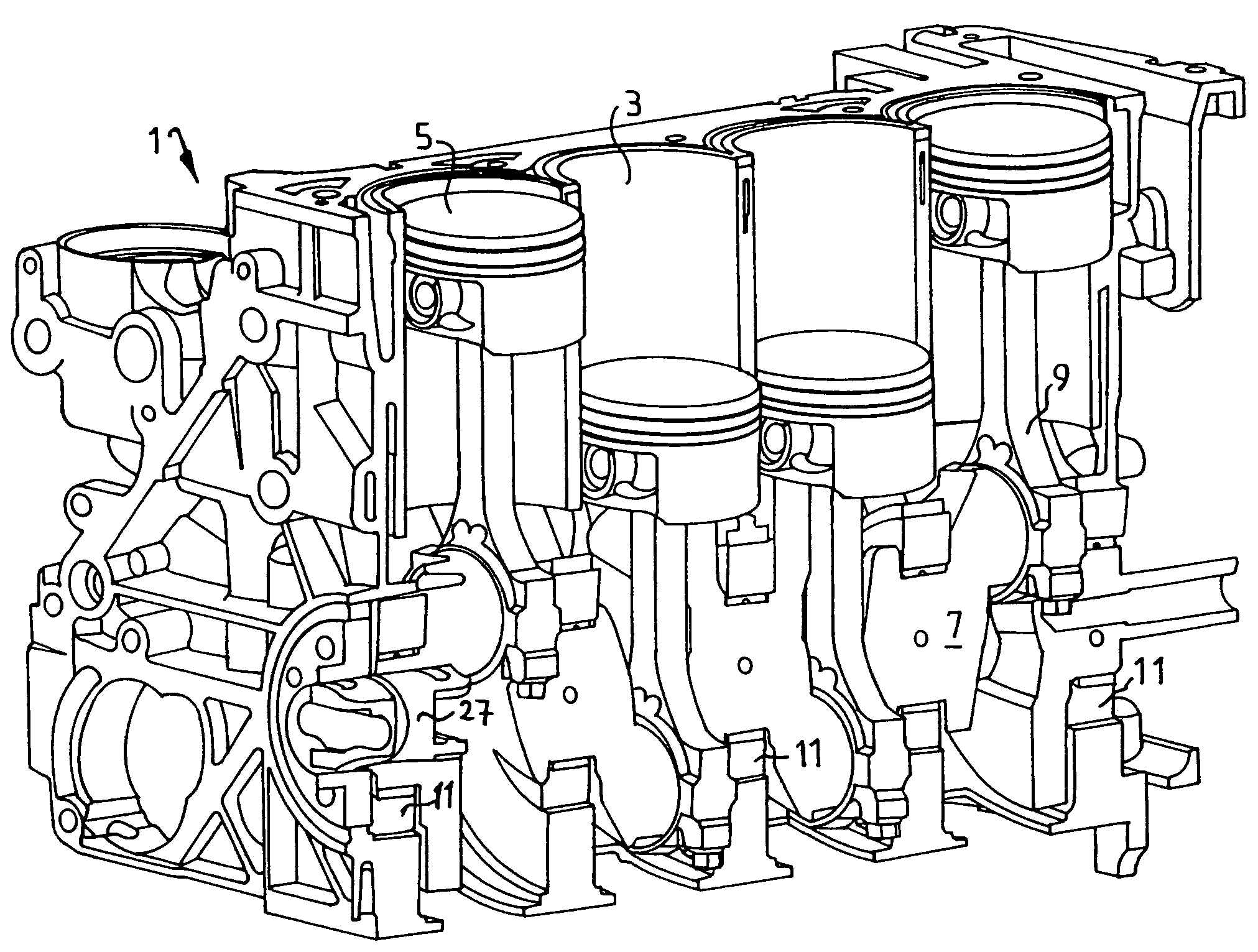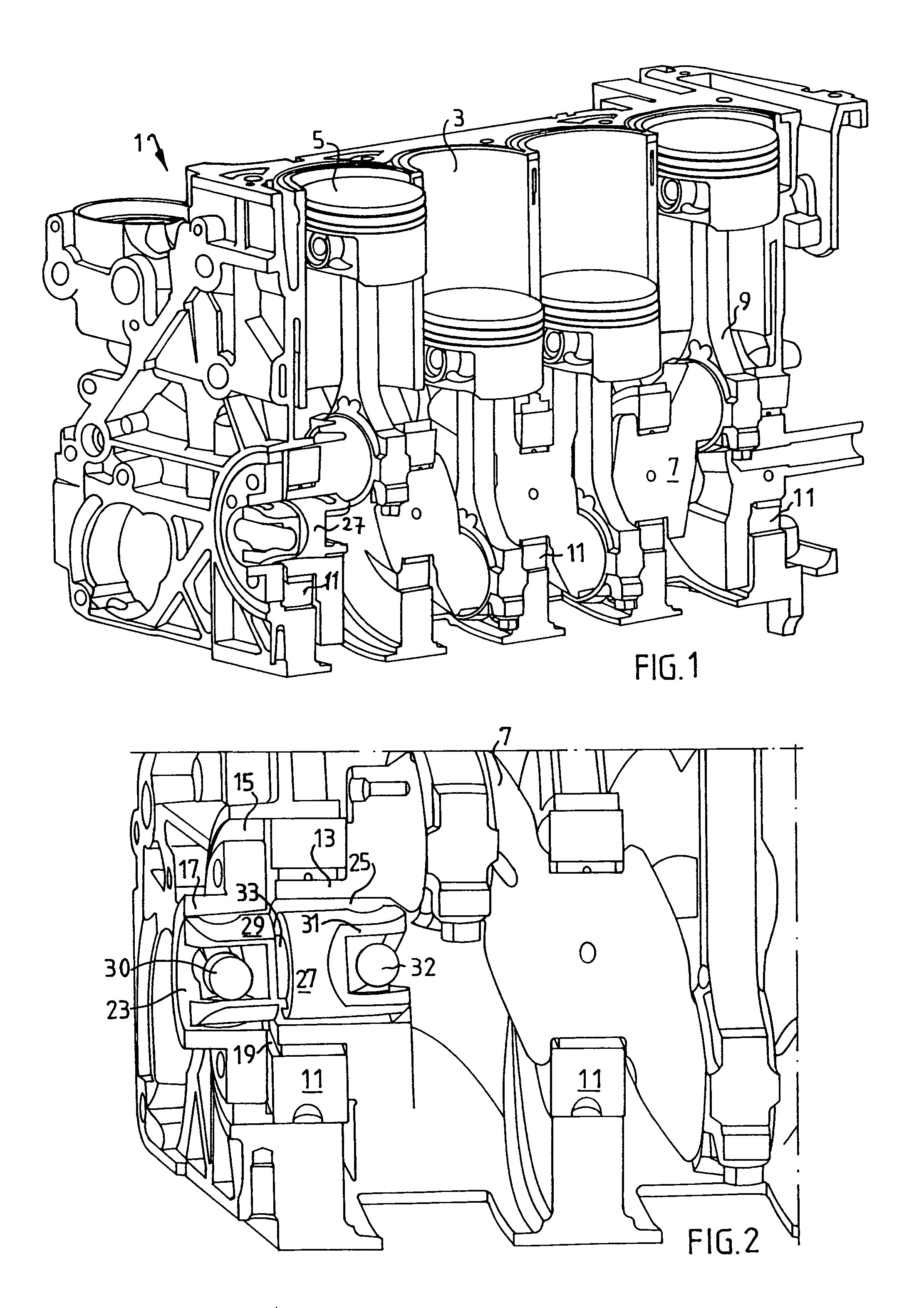Reciprocating engine
a technology of reciprocating engine and reciprocating shaft, which is applied in the direction of engine controller, machine/engine, mechanical apparatus, etc., can solve the problems of increasing the space required by the engine, the difficulty of common attachments of flywheel/coupling/transmission, and the limited space available in the engine house. achieve the effect of maintaining the ability to transmit torqu
- Summary
- Abstract
- Description
- Claims
- Application Information
AI Technical Summary
Benefits of technology
Problems solved by technology
Method used
Image
Examples
Embodiment Construction
[0021]FIG. 1 shows in cross-section a combustion engine 1 of reciprocating type intended for a motor vehicle. The combustion engine has four cylinders 3 with associated pistons 5. These are in a conventional manner interconnected via a common crank shaft 7 by means of connecting rods 9. The crank shaft 7 is supported by a plurality of eccentric crankshaft bearings 11 arranged in the cylinder block of the combustion engine, which allow for rotation of the crank shaft 7 in the cylinder block. The force that is generated in the cylinders 3 is transmitted, via the connecting rods 9, to the crank shaft 7, and is forwarded to a not shown coupling / transmission for the operation of the wheels of the motor vehicle, but possibly also to a cam shaft for opening / closing of the valves of the reciprocating engine, or other devices that may take advantage of the energy produced by the reciprocating engine.
[0022]With eccentric crank shaft bearings 11 is meant eccentric supporting of the crank shaft...
PUM
 Login to View More
Login to View More Abstract
Description
Claims
Application Information
 Login to View More
Login to View More - R&D
- Intellectual Property
- Life Sciences
- Materials
- Tech Scout
- Unparalleled Data Quality
- Higher Quality Content
- 60% Fewer Hallucinations
Browse by: Latest US Patents, China's latest patents, Technical Efficacy Thesaurus, Application Domain, Technology Topic, Popular Technical Reports.
© 2025 PatSnap. All rights reserved.Legal|Privacy policy|Modern Slavery Act Transparency Statement|Sitemap|About US| Contact US: help@patsnap.com


